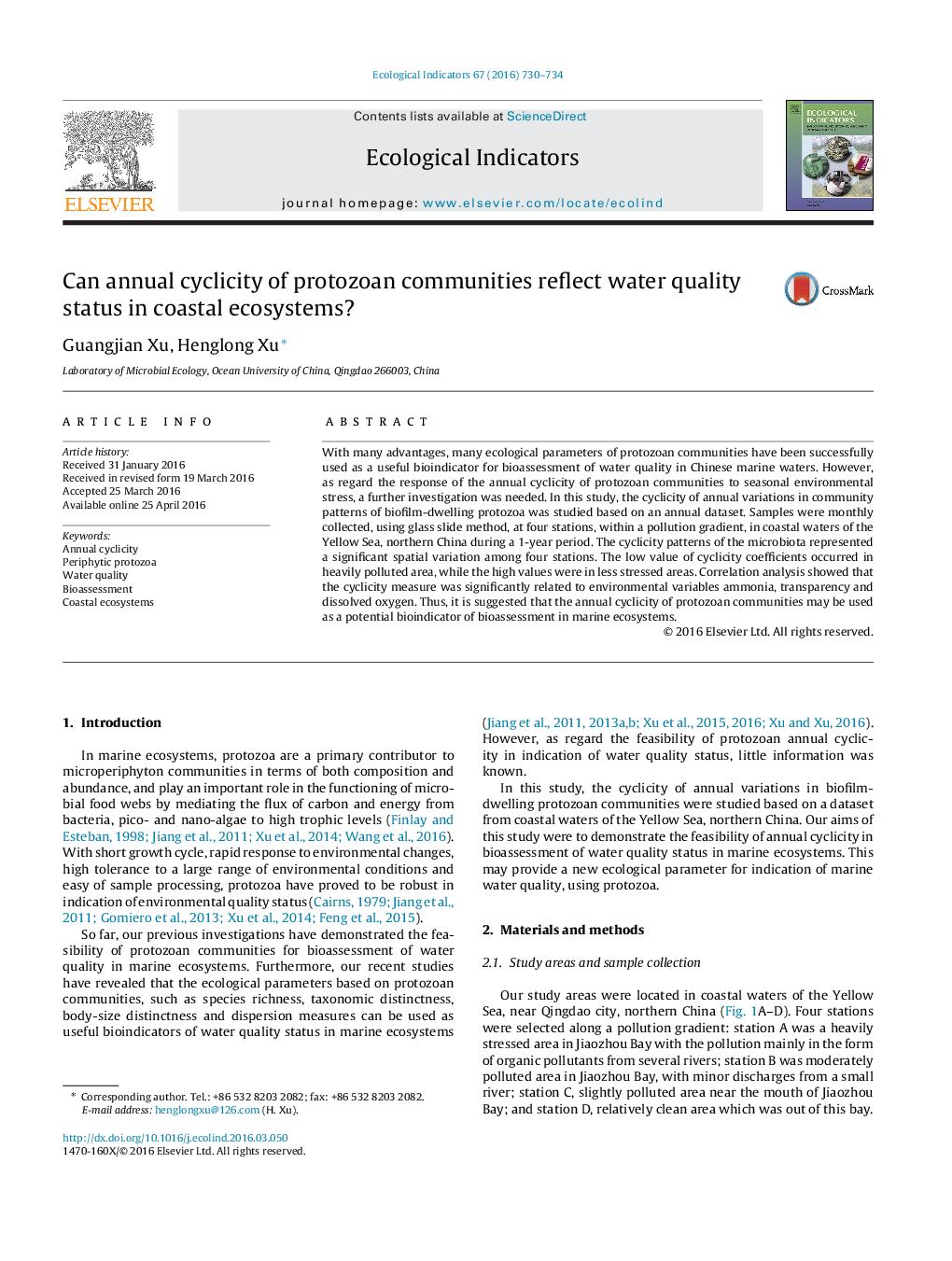| Article ID | Journal | Published Year | Pages | File Type |
|---|---|---|---|---|
| 4372918 | Ecological Indicators | 2016 | 5 Pages |
•The cyclicity of biofilm-dwelling protozoan communities is different among four stations.•The cyclicity coefficients showed an increasing trend along the pollution gradient.•The cyclicity coefficients were significantly related to nutrients e.g., ammonia nitrogen.•The cyclicity may be used as a potential bioindicator of water quality in marine ecosystem.
With many advantages, many ecological parameters of protozoan communities have been successfully used as a useful bioindicator for bioassessment of water quality in Chinese marine waters. However, as regard the response of the annual cyclicity of protozoan communities to seasonal environmental stress, a further investigation was needed. In this study, the cyclicity of annual variations in community patterns of biofilm-dwelling protozoa was studied based on an annual dataset. Samples were monthly collected, using glass slide method, at four stations, within a pollution gradient, in coastal waters of the Yellow Sea, northern China during a 1-year period. The cyclicity patterns of the microbiota represented a significant spatial variation among four stations. The low value of cyclicity coefficients occurred in heavily polluted area, while the high values were in less stressed areas. Correlation analysis showed that the cyclicity measure was significantly related to environmental variables ammonia, transparency and dissolved oxygen. Thus, it is suggested that the annual cyclicity of protozoan communities may be used as a potential bioindicator of bioassessment in marine ecosystems.
